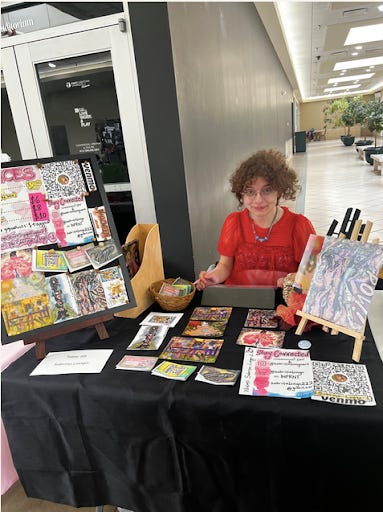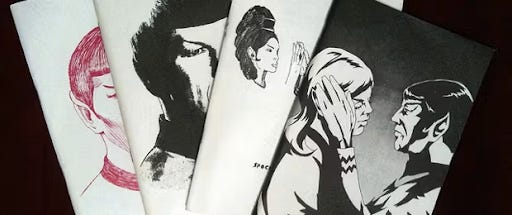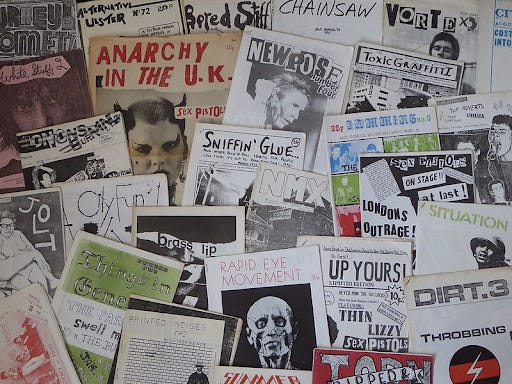Zines: Preliminary Notes on an Independent Study, and Why You Should Care
Written by TFN Writer: Sabrina Longo
“As zine creator and professor Mimi Thi Nguyen [Gender & Women’s’ Studies Professor at UIUC] said in a 1997 interview, ‘We talk about women’s issues, but which women are we talking about?’ These sorts of critiques likely led to the increase of the number of zines by people of color over the course of the late 1990s, Radway notes.” From “Start a Riot (and a Zine), Grrrl,” JSTOR Daily.
What is a Zine?
Unlike the Cosmopolitan and People magazines sitting idle at your local Walmart, zines (ZEENS) are cheaply-crafted mini magazines that one author/artist has full jurisdiction over (i.e., the production, copying, and distribution processes). Most often priced at only $1-10 a piece, zines are an artists’ labor of love rather than a product they generate as part of their 9 to 5 (Chen). Without deadlines and standards to meet, zines are a liberating craft most often about pop culture, personal experiences, niche interests, or literally anything you can think of to share with often small, enthusiastic audiences.
Who Makes Zines?
If you’ve ever made those vocabulary booklets in elementary science classes, you’ve already made a zine! And if you’ve consumed graphic novels, zines are its anti-capitalistic sister.
Anyone—from the engineering student who claims they’re not creative to professional artists and writers (e.g., Art Spiegelman of Maus, Ray Bradbury among others)—can and have made a zine. Due to zine’s inclusive nature, marginalized communities (i.e., women, BIPOC, LGBTQ+, disabled folks, etc.) have used this medium to express themselves since the 1960s with the first zine was ‘published’ in “May of 1930 in the USA [named] The Comet . . . by the Science Correspondent Club.” It has its origins with science fiction fans obsessed with Star Trek; Spocknalia (1967) was the one of the first zine collections to become popular. And, like fandoms on Instagram and TikTok today, zines are a way for people to create discourse about their obsessions, and even interact with celebrities themselves (i.e., Spocknalia had letters from Star Trek cast members incorporated into their zines). Yet, it is by no means limited to that genre or a white, male-dominated fan base (Kero). In fact, third-wave feminism subcultures like riotgrrrl—a subculture that is an intersection of feminism, punk music, and politics—flourished with zines because they acted as a medium to communicate information about protests and ideology.
*Positive Note on the Sustainability of Zines: Many zine-makers pay attention to “color economics,” or using the least materials (i.e., ink colors) possible for the greatest output that increases creative potential.
Where Can You Find Zines in Urbana-Champaign:
Zine Library at the Independent Media Center – Website: https://www.ucimc.org/zine_library2
CU Small Press Fest held biannually @cusmallpressfest sponsored by the @art.coop.inc (who also hold a biannual zine exhibition with their art store) on Instagram.

Learn More About Zines & Sources Used:
“But I Love the Zine”: A short documentary with a collage of interviews from zine-makers across California, their creative processes, and why zines are empowering.
“Zine-Making as Feminist Pedagogy” from JSTOR: https://www.jstor.org/stable/10.5406/femteacher.24.3.0155
“Start a Riot (and a Zine), Grrrl” from JSTOR Daily: https://daily.jstor.org/start-a-riot-and-a-zine-grrrl/
“History of the Zine”: https://bookriot.com/history-of-zines/




